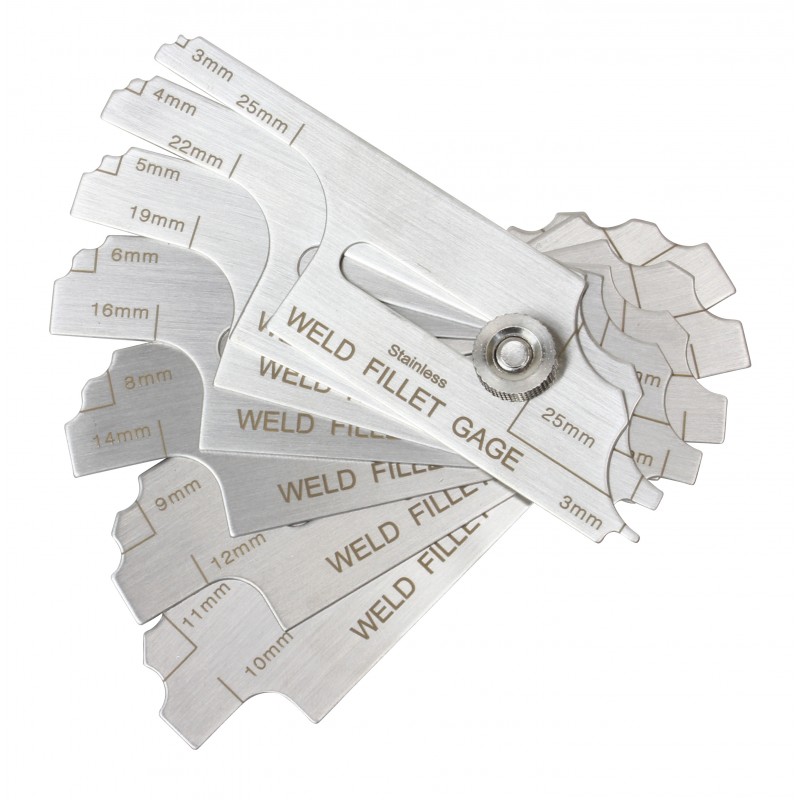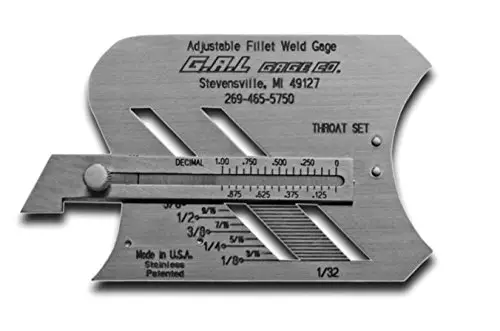Embark on a Journey to Mastery: Understanding the Essence of a Fillet Weld Gauge
In the realm of welding, precision is paramount, and that’s where the humble yet mighty fillet weld gauge steps into the spotlight. This indispensable tool empowers welders with the ability to achieve flawless fillet welds, ensuring impeccable craftsmanship and structural integrity. But mastering this guardian of precision demands a profound comprehension of its anatomy and application techniques. Prepare to dive into a voyage of discovery, delving into the secrets of fillet weld gauges and unlocking the boundless realms of welding excellence.

Image: sitcouae.co
At its core, a fillet weld gauge is a precision instrument meticulously crafted to measure the leg length of fillet welds, a key determinant of weld quality. These gauges come armed with an array of meticulously engineered scales, each precisely calibrated to encompass a spectrum of leg lengths. By deftly positioning the gauge against the weld, welders gain instant insight into the weld’s leg length, enabling immediate adjustments to maintain optimal parameters.
The significance of fillet weld gauges extends far beyond mere measurement. They serve as watchful guardians of weld quality, ensuring adherence to stringent engineering specifications. In industries where structural integrity is paramount, such as construction and manufacturing, these gauges play a pivotal role in preventing catastrophic failures. Moreover, understanding how to use fillet weld gauge unlocks the gateway to enhanced productivity and efficiency, allowing welders to confidently tackle projects with unparalleled precision and speed.
Navigating the Nuances of Fillet Weld Gauges: A Step-by-Step Enlightenment
-
Assembling the Gauges: A Foundation for Accuracy
Before embarking on your welding odyssey, meticulously assemble your fillet weld gauge. Interlock the vertical and horizontal arms, ensuring they form a perfect right angle. This precise alignment is the cornerstone of accurate measurements, providing an unshakeable foundation for your welding endeavors.
-
Selecting the Appropriate Scale: A Tailored Approach
With your gauge assembled, it’s time to select the scale that aligns precisely with the leg length you seek to measure. Each gauge boasts an array of scales, meticulously calibrated to encompass a comprehensive range of leg lengths. By aligning the gauge’s zero mark with the weld’s toe, you establish a reference point for precise leg length determination.
-

Image: weldgears.comPositioning with Precision: The Art of Alignment
Position the gauge perpendicular to the weld, ensuring the vertical arm rests snugly against the weld’s face. This meticulous alignment guarantees an accurate measurement, reflecting the true leg length of your weld.
-
Reading the Gauge: Unlocking the Secrets of Measurement
After carefully positioning the gauge, observe the point where the horizontal arm intersects the weld’s opposite face. This intersection reveals the weld’s leg length, precisely indicated on the gauge’s scale. Embrace this reading as a testament to your precision and the gauge’s unwavering accuracy.
Expert Insights: Wisdom from the Masters of Welding
-
Maintain Pristine Scales: A Promise of Precision
Expert welders emphasize the paramount importance of maintaining pristine scales on your fillet weld gauge. Over time, wear and tear can compromise the accuracy of these scales. Regularly inspect the gauge’s scales, meticulously removing any dirt or debris that may impede precise measurements. By preserving the integrity of the scales, you safeguard the gauge’s unwavering accuracy, ensuring the reliability of your welding endeavors.
-
Proper Handling: A Testament to Care
Treat your fillet weld gauge with the utmost care, for it is a delicate instrument that demands respect. Avoid subjecting the gauge to excessive force or careless handling, as this can compromise its precision. Store the gauge in a secure location, shielded from harsh elements and accidental damage. By nurturing the gauge’s well-being, you extend its lifespan and ensure its unwavering accuracy.
-
How To Use Fillet Weld Gauge
Embrace Calibration: A Commitment to Excellence
As a testament to your unwavering commitment to precision,定期校准your fillet weld gauge. Utilize certified calibration blocks to meticulously verify the accuracy of your gauge’s scales. This proactive approach ensures that your measurements remain impeccable, allowing you to consistently produce welds of unparalleled quality.